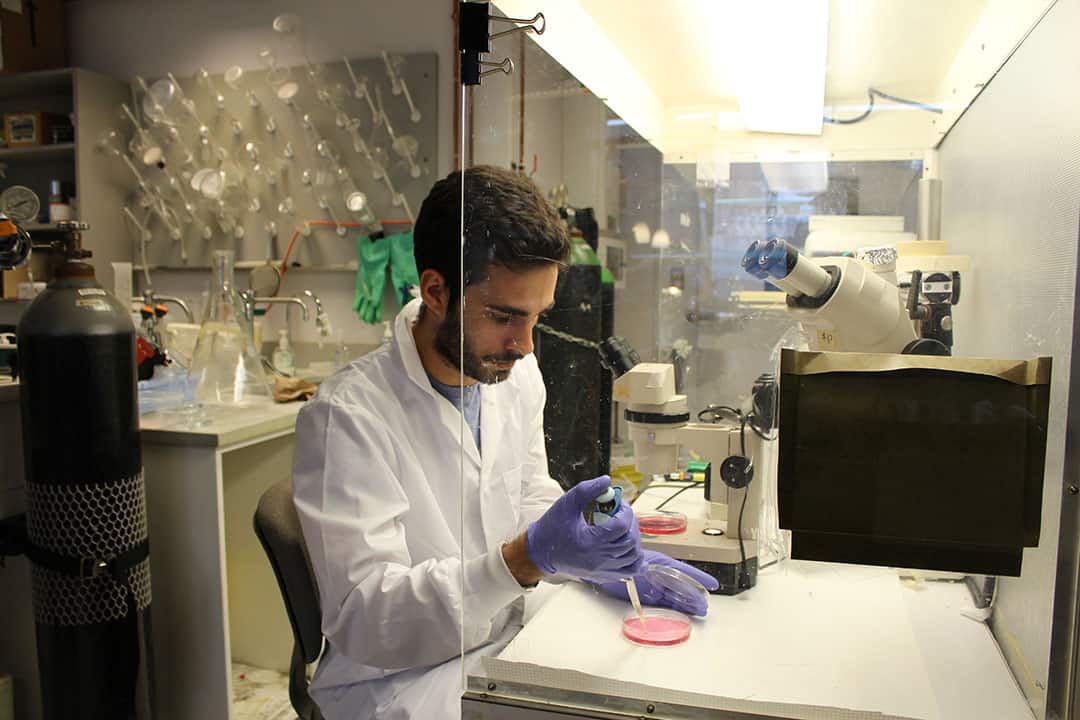A group of researchers from the Donnelly Centre for Cellular and Biomolecular Research and the Institute of Biomaterials and Biomedical Engineering (IBBME) at U of T have found a prospective alternative treatment for type 1 diabetes. Placing healthy pancreatic cells underneath the skin can induce production of the hormone insulin in order to maintain normal blood sugar levels.
Type 1 diabetes results from the destruction of pancreatic “beta cells” by the immune system. Since beta cells normally create insulin, without them, the body’s ability to regulate blood sugar levels becomes impaired. Treatment is currently limited to insulin injections, and blood sugar must be consistently monitored.
In this study, led by IBBME PhD candidate Alexander Vlahos, healthy pancreatic islets — clusters of cells in the pancreas where beta cells are located — were injected under the skin.
Vlahos discovered that normal blood sugar levels could be restored after 21 days. When these cell transplants were removed, diabetic levels of blood sugar returned.
The process of injecting pancreatic islets is called islet allo-transplantation and has been employed in previous research. It has been shown to improve glucose control, reduce the need for insulin injections, and prevent hypoglycemia, or low blood sugar, which can cause seizures and weakness.
However, more predominant research methods have focused on injecting healthy islets into sites like the liver or abdominal cavity, which are considered hostile and can damage the new cells. Implanting islets in the liver also requires more donor cells and often results in minimal success.
“You need to overshoot the quantity of islets when injecting into the liver because you lose about 60 per cent of the transplanted cells within the first 48 hours. That number of islets require two to three donors for each recipient,” said Vlahos in a U of T Engineering News article.
Implanting islets in the pancreas has also proven insufficient because of the islets’ location within the pancreas. “Pancreatic islets are scattered throughout the pancreas in between other pancreatic cells that secrete digestive enzymes. This makes it impractical to try and deliver islets to the pancreas: you would most likely be delivering it to a region of the pancreas that is secreting these enzymes,” said Vlahos. The enzymes would then destroy the islets.
The skin is an innovative but promising place to inject healthy pancreas cells because the skin has a large surface area that can support many islets and is easily accessible should a patient respond negatively to the transplant.
According to Michael Sefton, a professor in the Department of Chemical Engineering and Applied Chemistry and IBBME, “[the skin] also presents fewer hazards than other transplantation sites.”
“The next phase of our research will involve engineering the blood vessel network first and then injecting fewer islets into the already vascularized tissue,” said Vlahos.
Proper blood flow is needed for this treatment to be effective because “pancreatic islets require 15 to 20 per cent of the blood flow to the organ,” according to Vlahos. If the transplanted islets are surrounded by well-established network of blood vessels, more blood flow will reach the cells and will allow them to better integrate within the host.
This research was published in the Proceedings of the National Academy of Sciences. The team will be advancing to the next phase of the study with $1.1 million in funding awarded by the international diabetes foundation Juvenile Diabetes Research Foundation.


